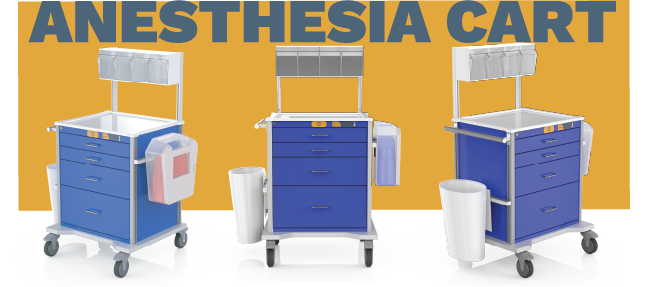The world of medicine is one that is constantly changing and improving. We use procedures and equipment today that would not have been recognizable just a few years ago. This means that procedure carts have also had to adapt to offer the most effective service for patients and staff.
Modern changes in medicine
Changes in the field of medicine span every aspect of healthcare. We have better understanding of what causes diseases and how they spread. We have more effective procedures for early diagnosis. We have changed the systems we use to run medical environments. Technology, in particular, has allowed for dramatic improvements, from tiny cameras that can explore remote areas of the body, computerized record-keeping through to electronic locks. Procedure carts are not exempt from these modern adaptions, which allow them to be used in a wider range of settings, in different medical situations and with a variety of patients.
How a procedure cart can be adapted for modern needs
There are actually several types of specialized medical cart used in modern medicine. These include anesthesia carts, code carts and isolation carts, as well as standard procedure carts. Each is designed for a specific purpose, so you need to ensure you have the correct cart for every situation.
Anesthesia carts are for spaces such as operating theaters where anesthesia is highly likely. This could include common equipment such as needles and syringes as well as more specialized devices such as oxygen masks or tracheal tubes. As well as storage (including more secure space for sharps as well as easily accessible areas for other items such as gloves), a good anesthesia cart will allow for safe disposal of dangerous waste.
Code carts are also known as crash carts or emergency carts. They are needed in emergency rooms, for immediately life-threatening situations. That means space for defibrillators, IVs, intubation equipment, medications and syringes. Again, you need safe storage and disposal of equipment, including sharps. These carts are often colored red so they can easily be identified in an emergency.
All medical settings need infection control procedures, but the isolation cart is designed for preventing the spread of bacteria. It can store personal protective equipment such as gloves, masks, gowns and face shields. It is also even more important than normal that these carts can be easily cleaned.
Then there is the standard procedure cart, which contains all the basics. There might be some overlap with the other specialty carts, such as holding gloves and medications, safe storage and disposal for sharps, but it should be adaptable to serve any common situation in a medical setting. Configurations of shelves and drawers will probably be adjustable, depending on different needs.
Procedure cart – perfect to serve modern medical needs
When the vast range of different carts and their varying purposes is considered, it becomes apparent that you will need to choose the most modern designs with specialized features. Having the right equipment stored safely in the right place is essential in ensuring that you are equipped to respond appropriately to any incident.

Comments are closed.